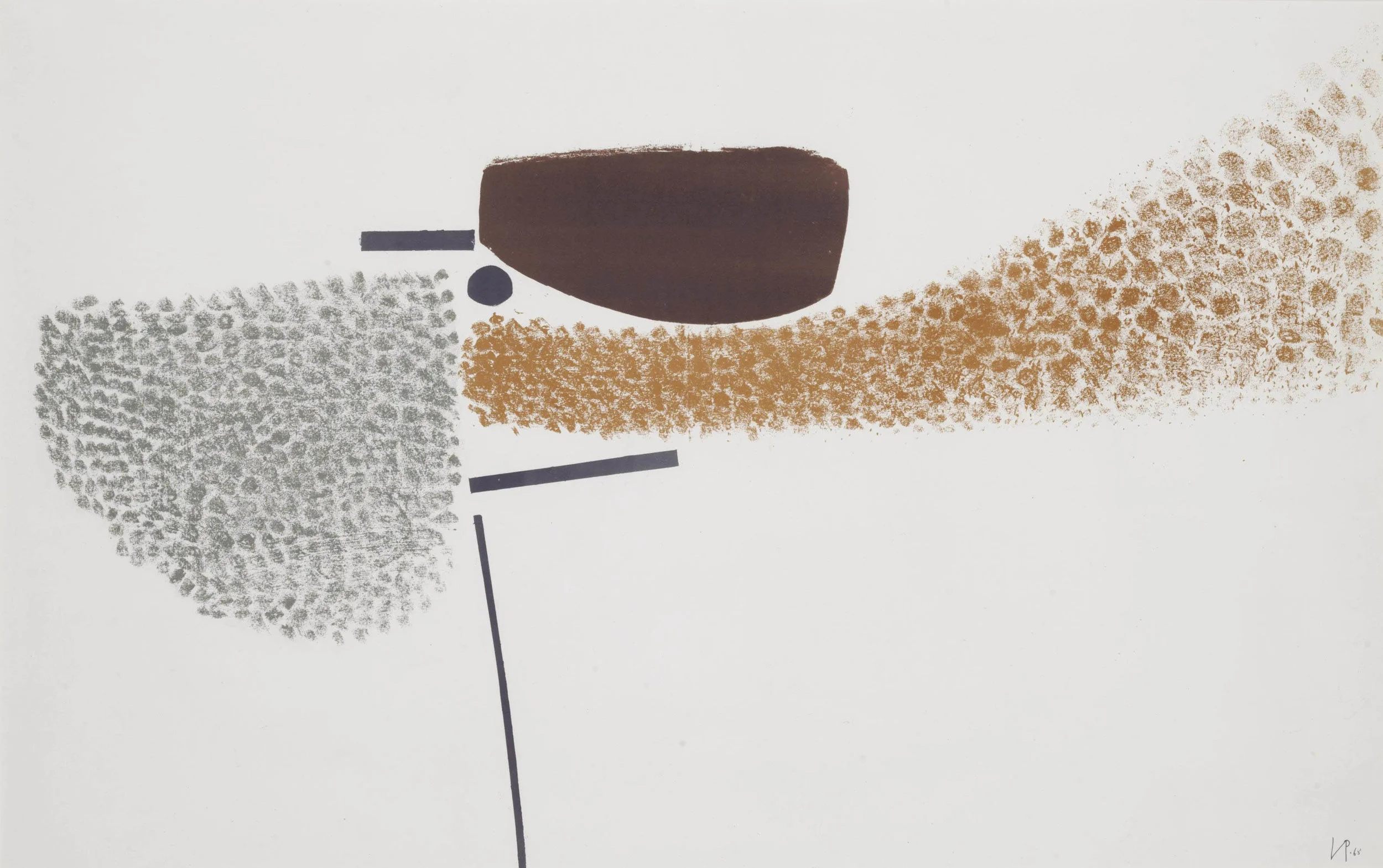‘Victor Pasmore was perhaps the most influential abstract artist in Britain and became one of the leading abstract painters of our time. His work can be found in many Public Collections around the world including: Tate Britain, Royal Academy of Arts - London, Museum of Modern Art - New York, The British Council, Yale Center for British Art and numerous regional British galleries.
Pasmore (1908-1998) was born in Surrey. Attended evening classes at Central School of Arts and Crafts from 1927, while working as a local government officer, and experimenting with art styles reflecting developments in art in France since the 1880s. In 1937 founded the Euston Road School with William Coldstream, Graham Bell and Claude Rogers, teaching a style of Cézannesque realism. The school closed in 1940, but this group moved on to teach at the Camberwell School of Art 1943-49, although Pasmore himself began to experiment with abstraction from 1947 onwards. Teaching at the Central School since 1949, he turned to abstract reliefs in 1952, and in the following year became Head of Painting at King’s College, Durham University, staying till 1961, when he was able to devote himself full-time to painting. In 1966 he moved to Malta, where he resided until his death, also enjoying producing graphics at an Italian workshop, in parallel with his paintings.
After experiments in lyrical abstraction in the early 1930s, and until his move towards abstraction again in the late 1940’s, for a decade his work showed a disciplined, sober form of Cézannesque realism in portraits and landscapes. His earliest new abstract experiments used linear forms and collage but soon, in parallel with the work of Kenneth and Mary Martin, became rigorously constructivist, with some works as three-dimensional wall-reliefs in wood and perspex. In the 1960s the geometry softened, introducing curved lines and edges, and bright colours, blossoming in the 70s and later into lyrical abstract compositions of points, wandering lines and planes of bright colours against his habitual white backgrounds, and even some drawn outlines of natural forms again.
After his first retrospective at the Arts Council Gallery in Cambridge (1955), he represented Britain at the 30th Venice Biennale in 1960 with an exhibition which toured to Paris, Brussels, Amsterdam, Bochum, Belgrade, Oslo and Copenhagen, and represented Britain again at the 8th Sao Paulo Bienial in 1965, toured to Rio de Janeiro, Buenos Aires, Lima and Santiago, in the same year as his retrospective at the Tate Gallery. Museum and gallery exhibitions proliferated across Europe and the USA, culminating in retrospectives at the Yale Center for British Art, New Haven, and the Phillips Collection, Washington DC (1988-89) and the Center for International Contemporary Arts , New York (1990) and the Serpentine Gallery, London (1991).’ www.victorpasmore.com
Contact the gallery to receive a catalogue of available artworks by Victor Pasmore




































